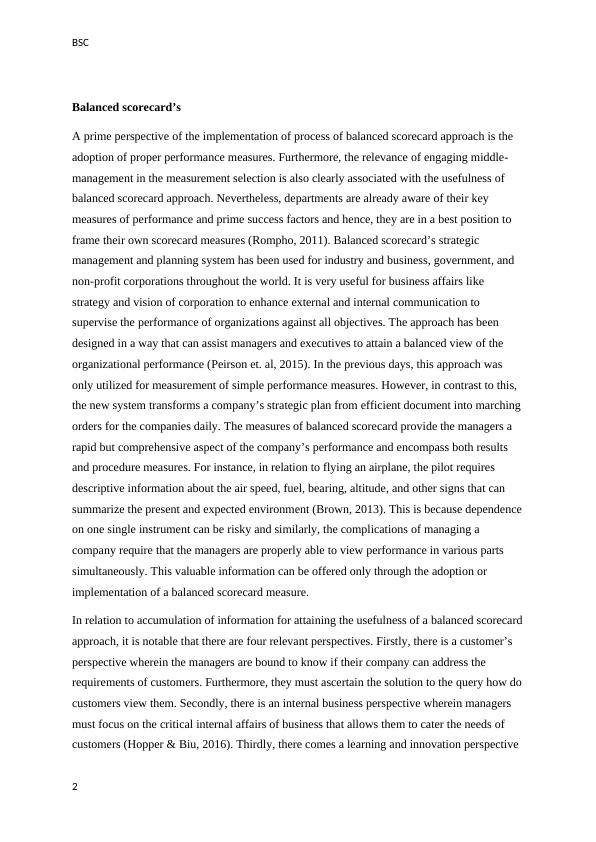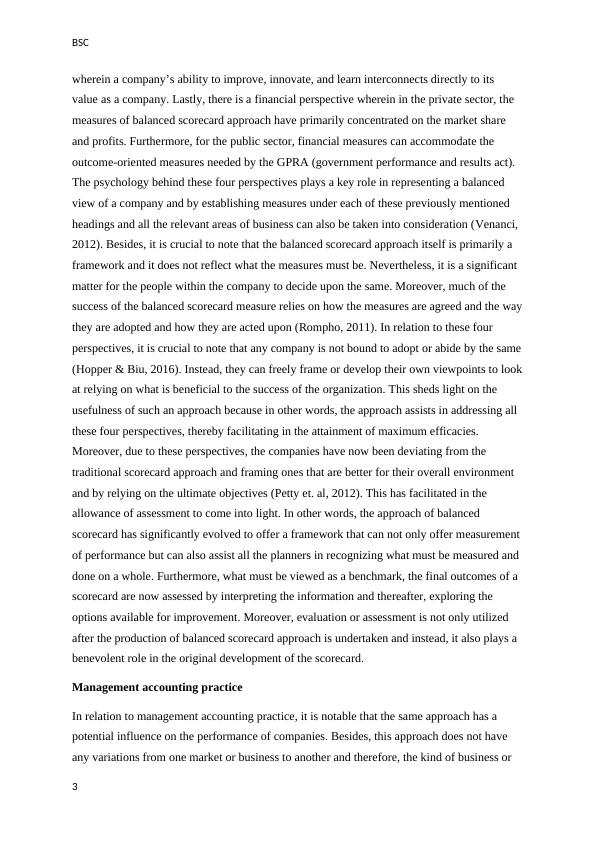Balanced Scorecard and Management Accounting Practice
Discuss the factors contributing to the development of Management Accounting Practice and evaluate the usefulness of Balanced Scorecard. Also, analyze Qantas's critical success factors and key performance indicators, and develop a strategy map and Balanced Scorecard based on them.
10 Pages3166 Words64 Views
Added on 2023-06-08
About This Document
This article discusses the implementation of balanced scorecard and management accounting practice in measuring performance. It also sheds light on critical success factors and key performance indicators of Qantas. The article is relevant for students studying ACC203 Management Accounting under BSC.
Balanced Scorecard and Management Accounting Practice
Discuss the factors contributing to the development of Management Accounting Practice and evaluate the usefulness of Balanced Scorecard. Also, analyze Qantas's critical success factors and key performance indicators, and develop a strategy map and Balanced Scorecard based on them.
Added on 2023-06-08
ShareRelated Documents
End of preview
Want to access all the pages? Upload your documents or become a member.
Audit Measures and Internal Control Mechanisms of Trunkey Creek Wines
|16
|3941
|293
St George & Westpac Acquisition: Economic Rationale, Analysis, and Performance
|17
|3971
|76
Myers: Financial Statement Analysis and Future Forecast
|18
|4555
|138
Advantages and Critique of Balanced Scorecard in Management Accounting
|7
|1086
|454
Use of Balanced Scorecard in Information Technology
|8
|1825
|102
Management Accounting Solution Assignment (Doc)
|13
|3923
|56



